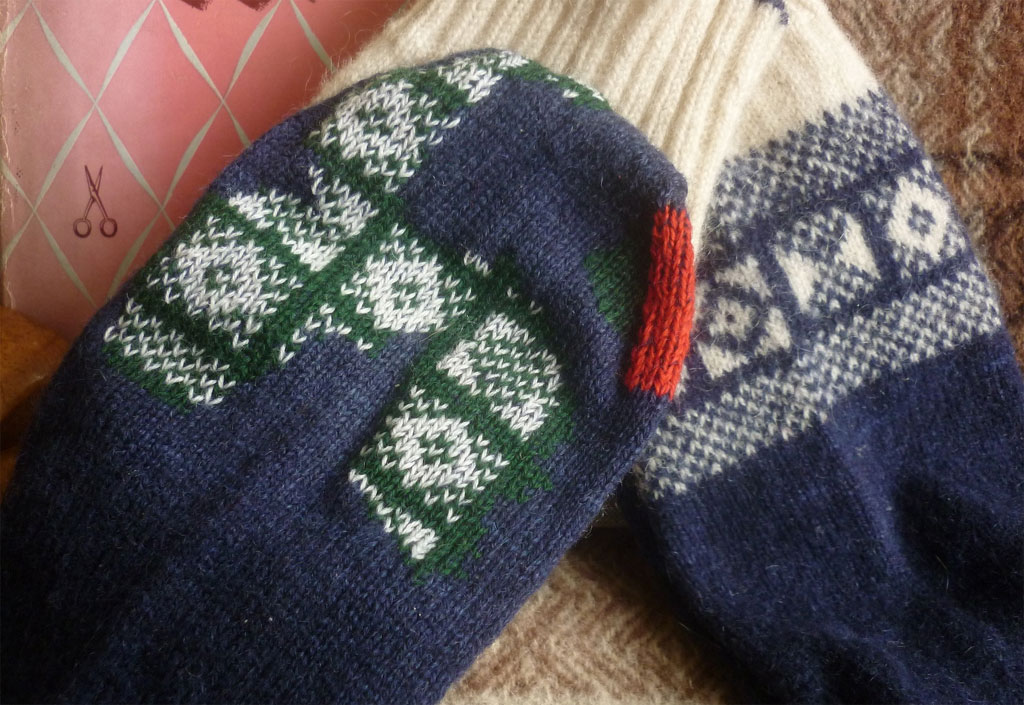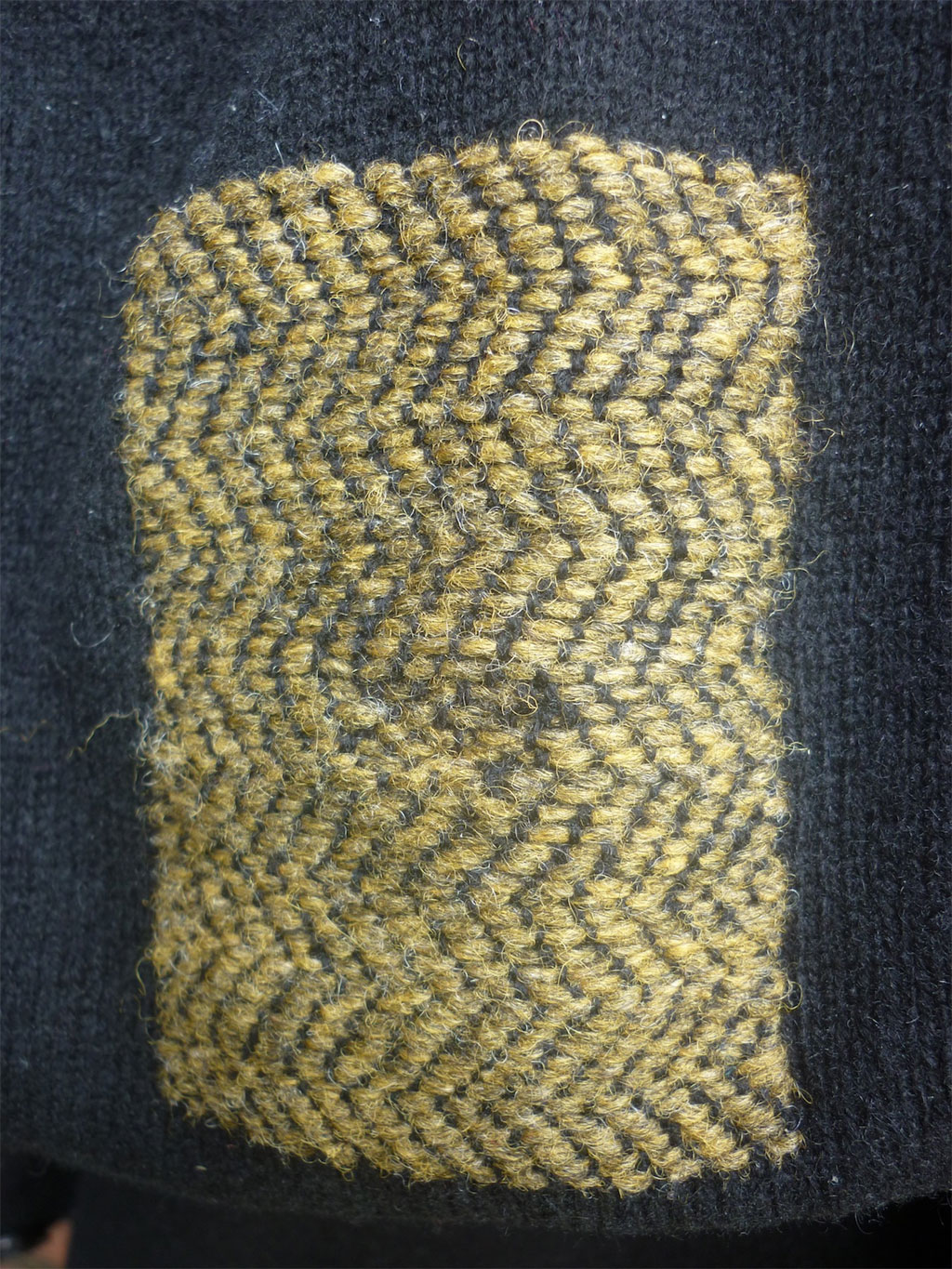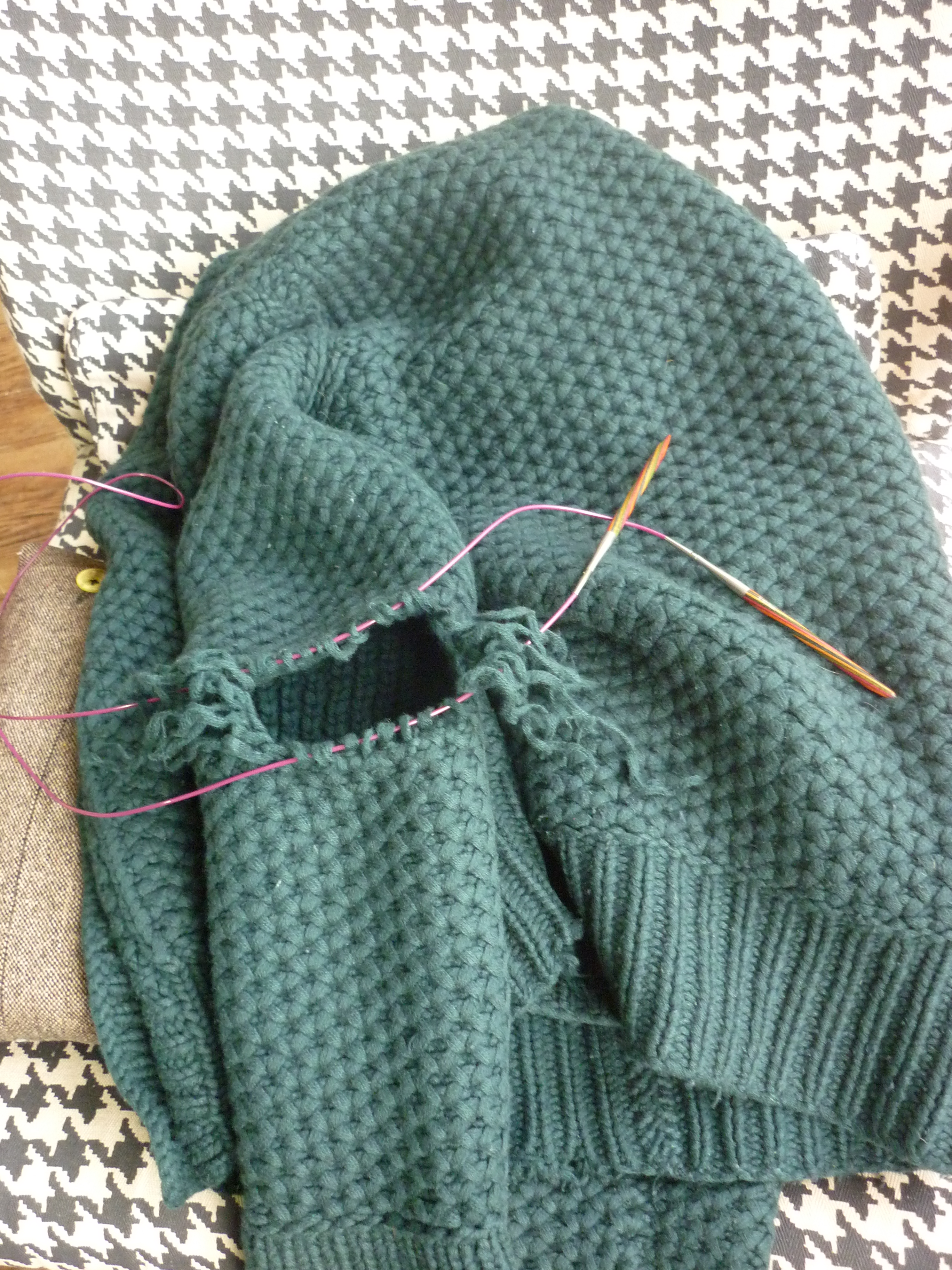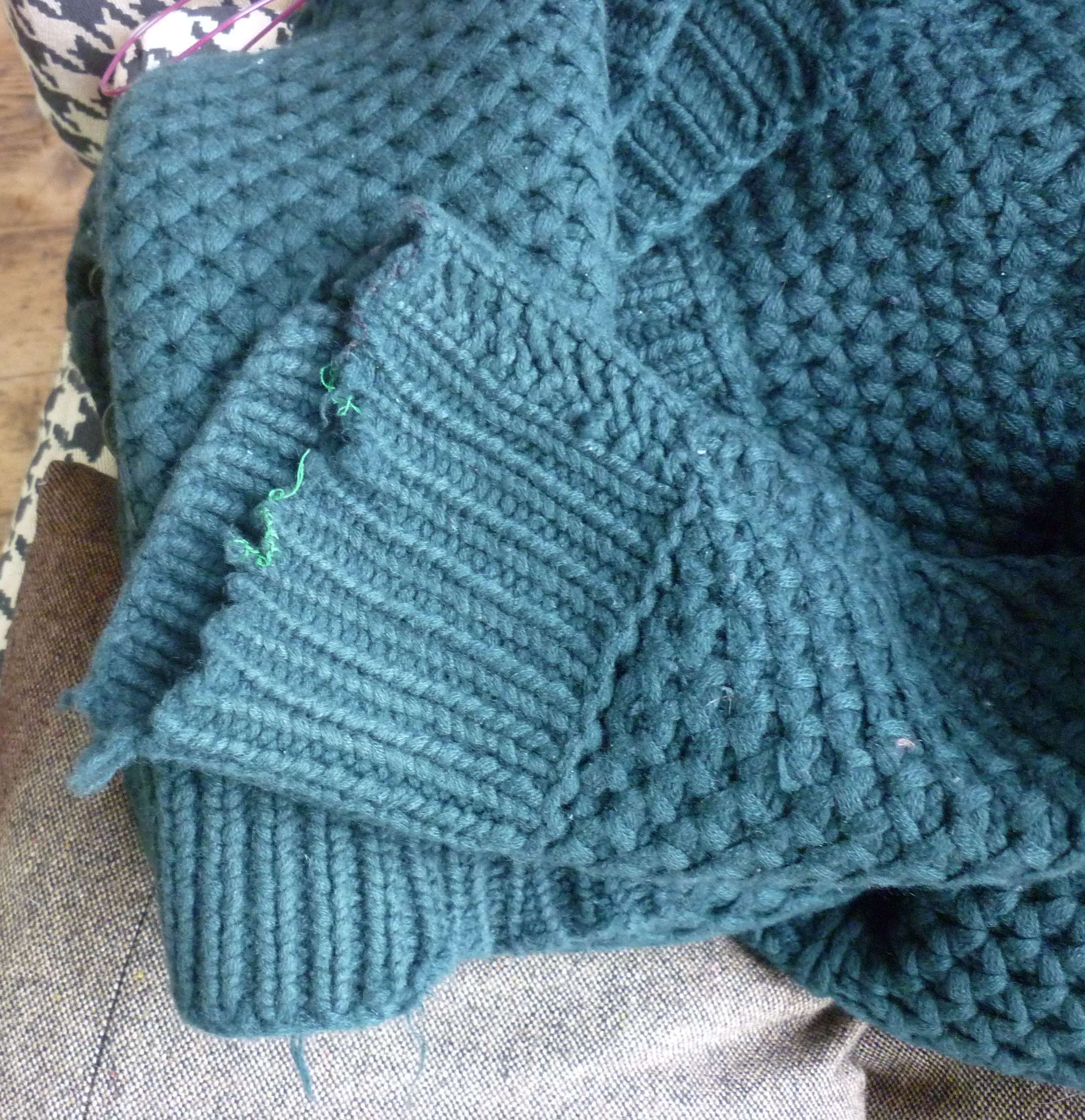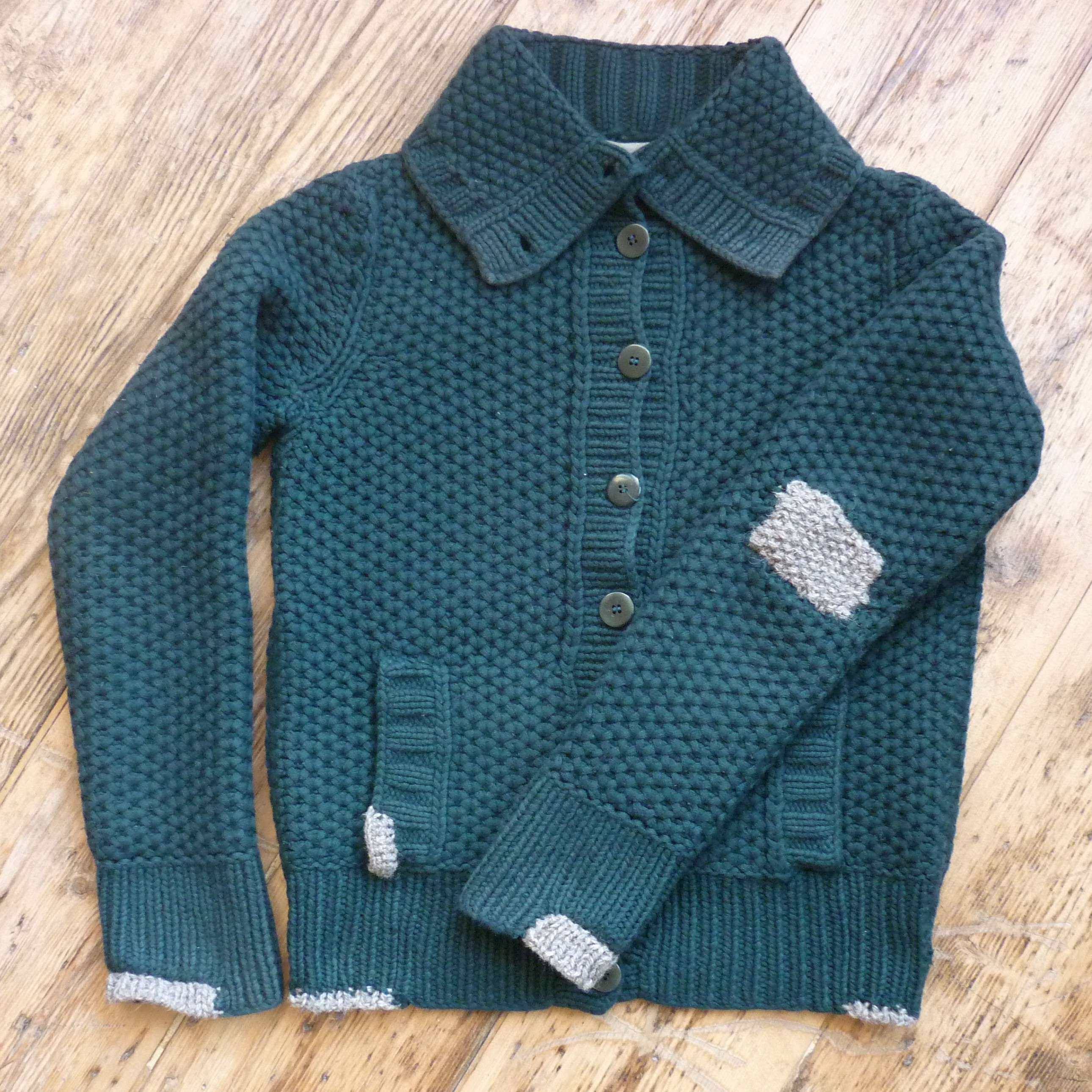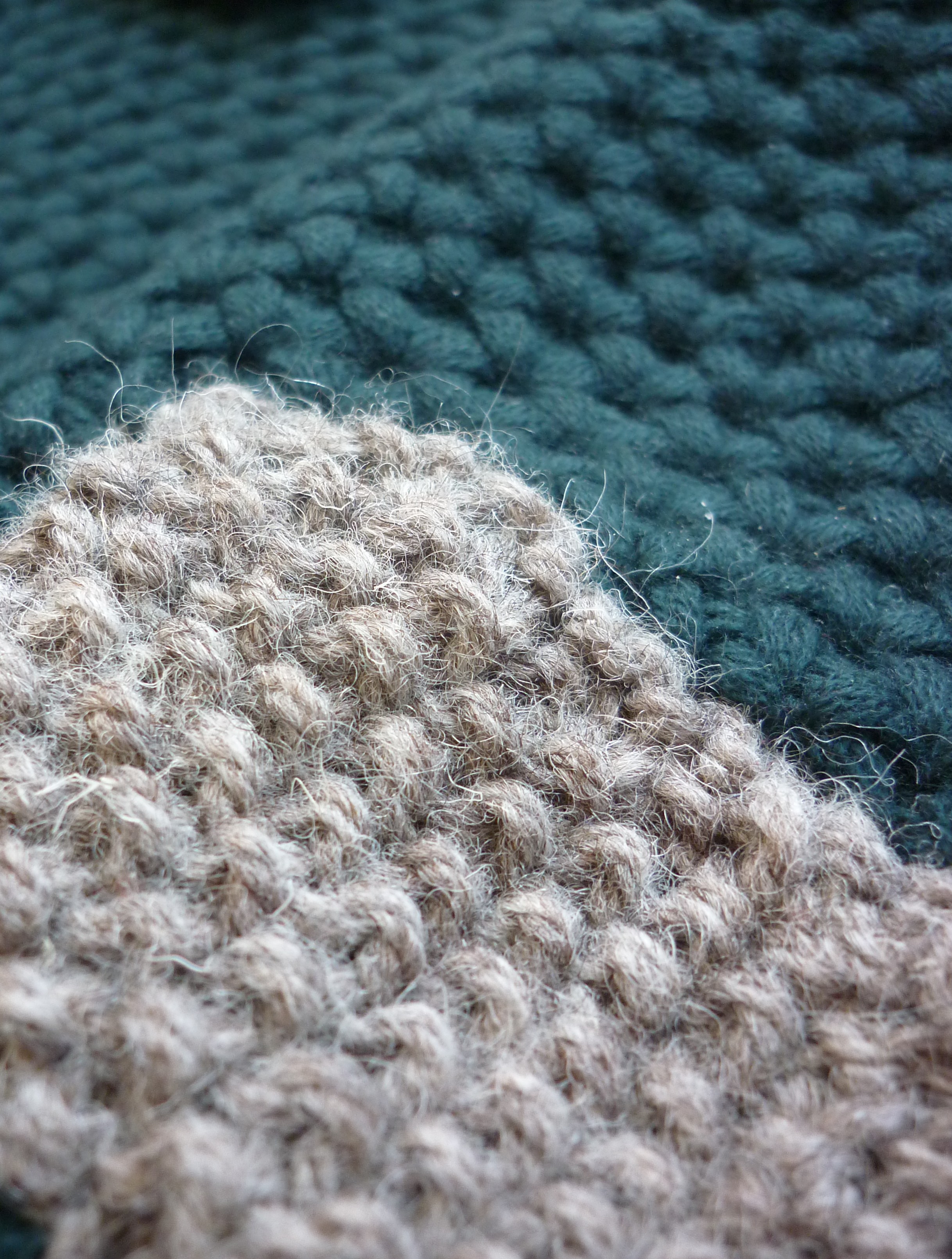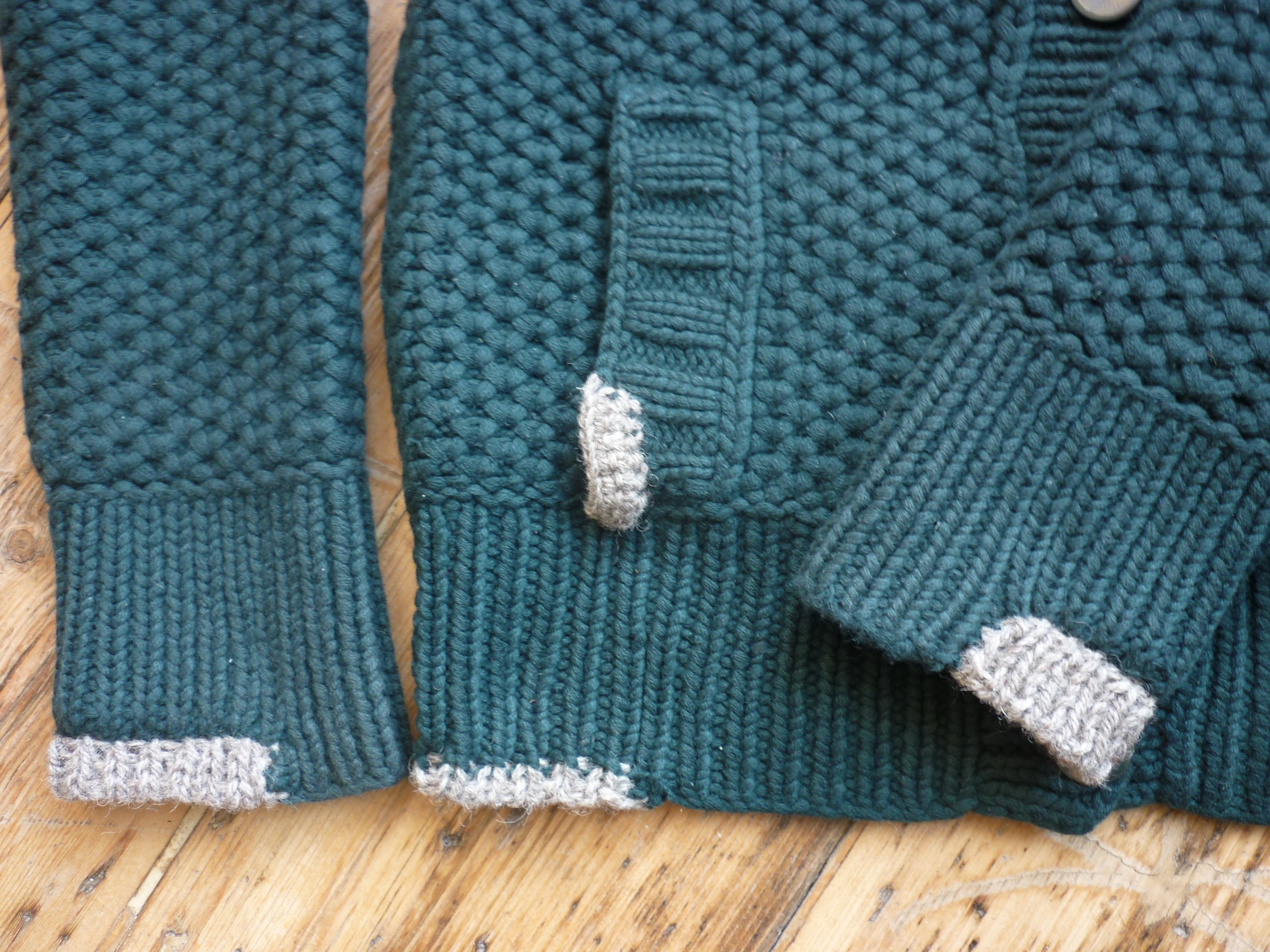As anyone who reads Tom’s blog will know, this member of TEAM WOVEMBER is a very keen mender of clothes! Tom is interested in textile traditions as well as in the physical characteristics of wool, and his mending practice often utilises wool for both its referential and material properties. For instance in the case of these darned socks, wool yarns were used not only to reinforce the fabric that has worn thin, but also to reinforce the Sanquhar stitch pattern used in the sock cuff pattern. These socks are both repaired with wool and about wool, with their references to the traditional knitting patterns produced with 100% WOOL on Sanquhar.
Sanquhar sock darn – photo and darn by Tom
Similarly, in the case of mending the worn elbows in a merino cardigan, Tom used a lovely pattern-darning approach (created in Jamieson’s shetland spindrift yarn) both to stabilise the fabric, and also to refer to the sorts of tweed, woollen jackets that traditionally feature elbow patches.
Mending cardigan elbows in pattern-darning – photo and darn by Tom
Tom’s thoughtful use of wool in mending is a way of making clothes more meaningful; of celebrating wool-related fashions and traditions through acts of repair; and of integrating his work with wool directly into daily life. I (Felicity) asked Tom to select one particular mending story from his amazing collection to share here on the WOVEMBER blog, as I think that mending with Wool (and especially Tom’s distinctive take on that) represents some of the most important work we can do for WOOL. Not only can imaginative mending practices add narratives and longevity to our clothes; they can also combat the same cultural forces which deny WOOL a central position in High Street Fashion! Celebrating and extending the life of our clothes is crucial to WOOL gaining a key position within the world of fashion; as long as we chuck clothes away after a few uses, WOOL cannot be a principal textile, because there is just no cheap way of raising sheep, having them shorn, processing their fleeces and turning them into sweaters, skirts, suits, hats, gloves etc. to be purchased on a BOGOF basis.
In this post, which originally was published on his tomofholland blog, Tom talks about mending a cashmere cardigan with Jacob wool. The contrast between the ultrafine cashmere fibres and the strong, bouncy wool of the Jacob sheep is one of the principal points of interest in this story which was originally published here.
Item #11 in The Visible Mending Programme mixes new mending techniques with a familiar story. Zoë had heard of my Visible Mending Programme through word of mouth. She had a gorgeous green cardigan with some fraying cuffs, welts and pockets that urgently required my attention. Oh, and one horrifying hole:
Zoë’s cardigan story will be familiar to many people: when she spent some time in New York, Zoë did the inevitable thing, and went shopping. The sales were on and she spotted a beautiful green cashmere cardigan which was reduced in price. However, it was still very expensive, it wasn’t in her size, and she didn’t really have the money for it. With a sad heart, she left the shop. But you know what it’s like: the cardigan stuck in her mind, and when she spotted another concession of the same shop, she just had to go in and check. Because you can never know. And there it was: THAT green cardigan. In her size. On sale. The only one left. What can one do?
Needless to say, Zoë returned to the UK with said cardigan. It has held up really well – I think the cashmere used is of superior quality. However, favourite items in your wardrobe make many outings, and get love worn around the edges: this frayed cuff shows signs of a mending attempt:
Stress points at pockets started to unravel, the welt started to fray, and of course, there was that hole in the elbow. The chunky knit meant I could try out some new ideas about cuff fixing and elbow patching, and I’m really pleased with the result. I used 100% Jacob wool in aran weight, as I like the contrast: the cardigan made of dyed 100% cashmere, a delicate and luxurious very soft fibre from goats. The mending done in undyed 100% jacob wool, which is very strong and has a more sturdy feel to it.
The elbow patch was knitted in (you can see stitches being picked up in the first picture). I used moss stitch, as Zoë mistakenly believed the cardigan was knitted in moss stitch:
The welt and cuffs were mended by picking up stitches and knitting a 1×1 ribbing. I used a tubular cast-off as it looks good and is very elastic. Jacob wool is strong and has lots of spring, so I’m sure it will keep up for a long time. I mended the pocket corner with a little bit of crochet:
I met up with Zoë earlier today. I’m pleased to report that she was delighted with Visible Mend #11. We had a nice chat and a coffee, when it turned out that she has another horrific hole in her wardrobe. That, however, will be the subject of another post.
All content © Tom van Deijnen and originally published on his tomofholland blog, where Wovember Team Member Tom provides mending inspiration with his Visible Mending Programme and talks about knitting. A lot.
